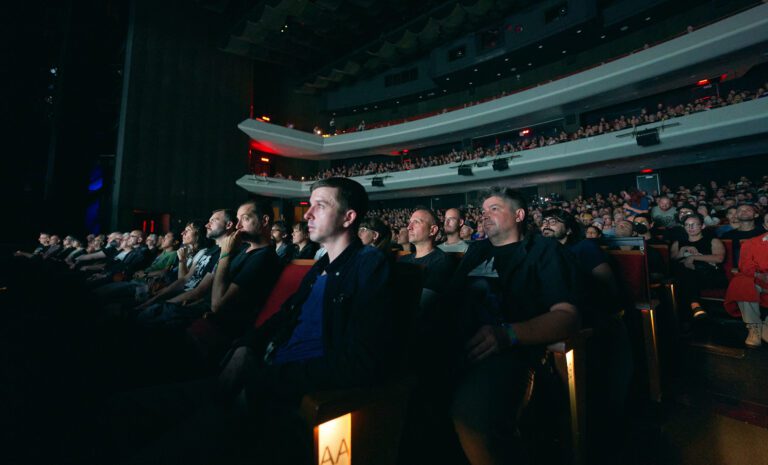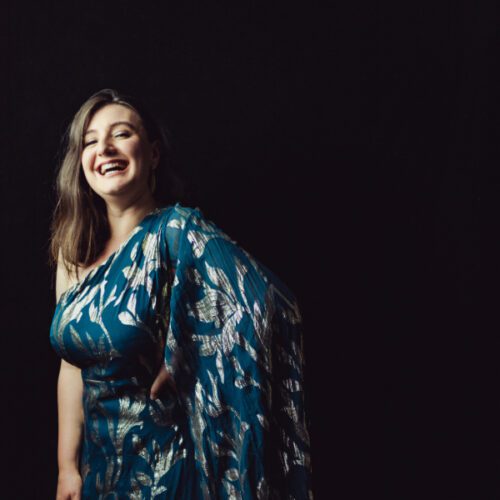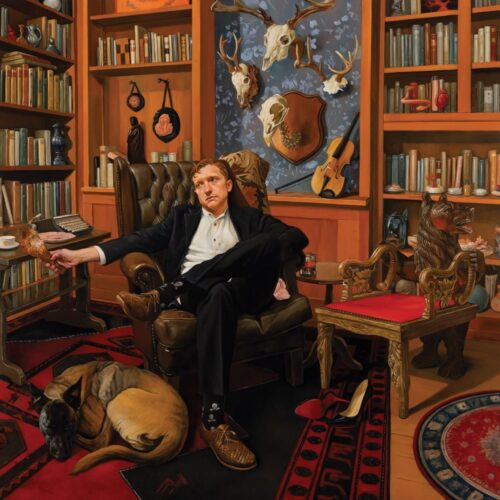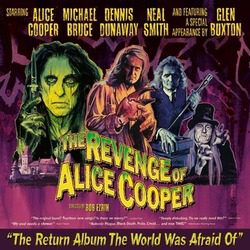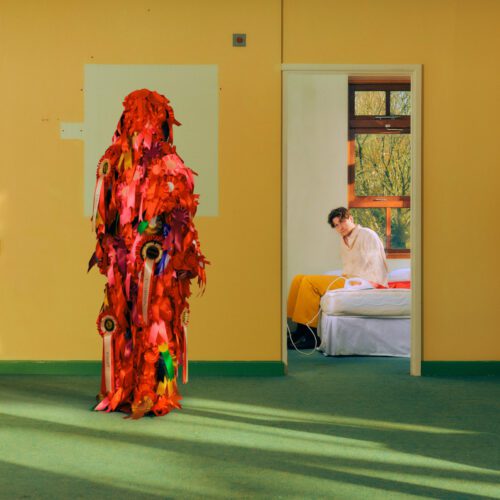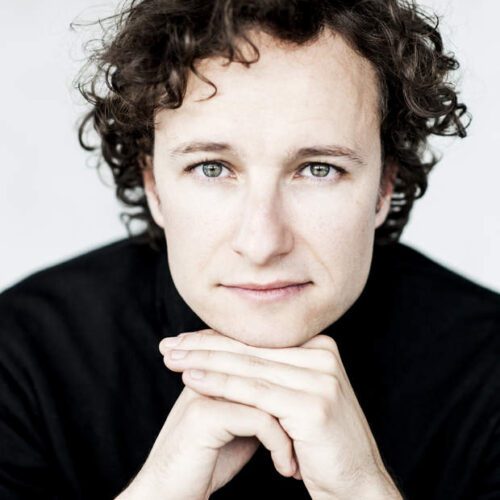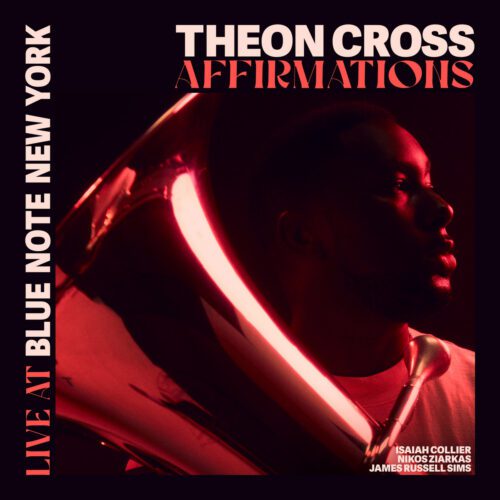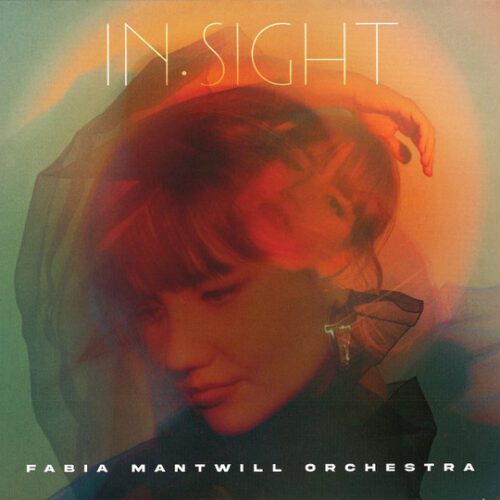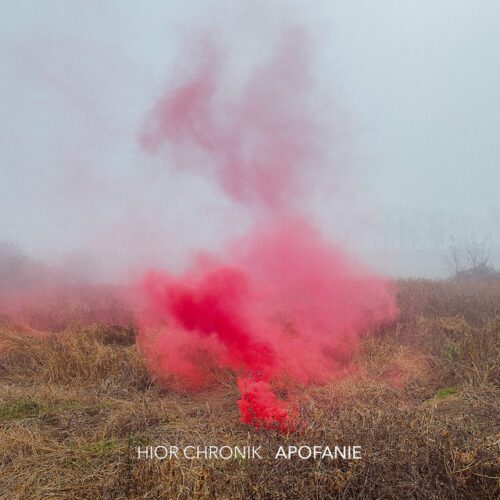For the first part of its A/Visions series, the MUTEK festival welcomed its audience in a Théâtre Maisonneuve equipped with a single giant screen. It was indeed through projections and loudspeakers that all the artistic action was communicated to the audience, at least for the first of the acts. In all, three artist duos were featured in this concert of experimental and immersive videomusic.
Crédits photos : Bruno Aiello Destombes
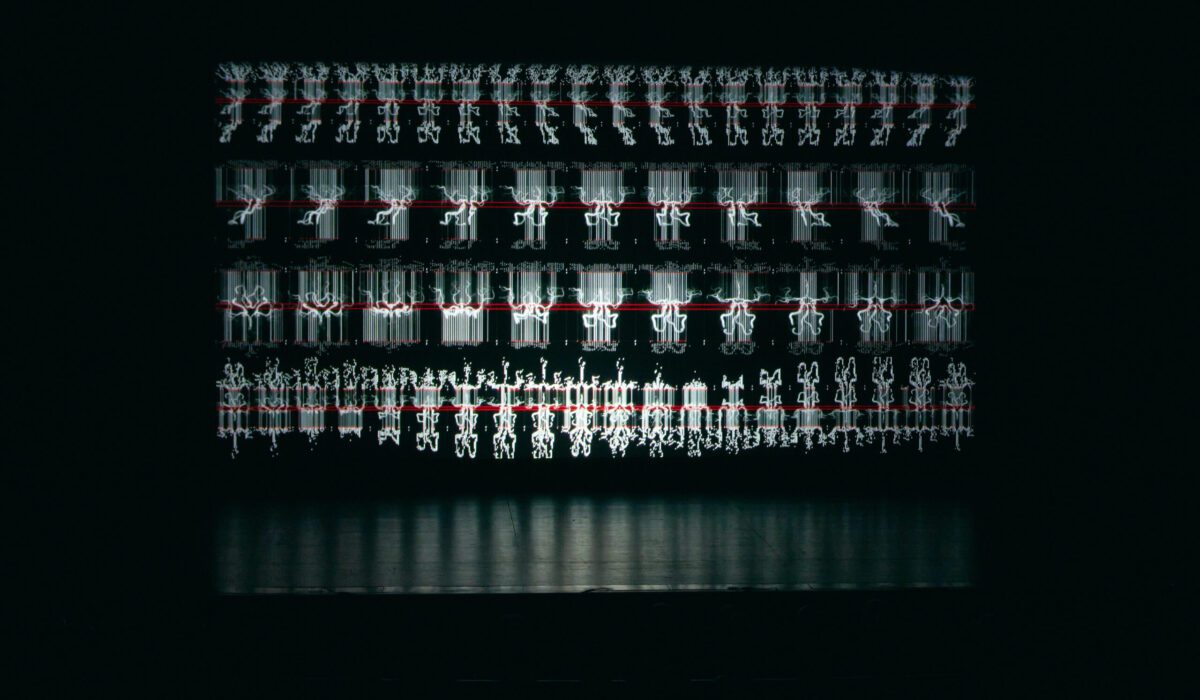
Kyoka & Shohei Fujimoto
The first quarter of Cinema Blackbox immediately sounded like a Ryoji Ikeda pastiche, with its high-pitched, sinusoidal tones and disembodied visuals. In fact, it featured many of the codes of the Japanese master of sound installations: exclusive use of black, white, and red, stroboscopic lines and rectangular shapes, minimalist aesthetics, and an abundance of synthesized sounds. Later, the composition became more complex, tackling more structured rhythms and multiplying visual planes tenfold into fast-moving mosaics. A brief moment of static brought in a few defined pitches, coloring an otherwise very industrial music, true to Kyoka’s performance presented the day before at the festival. Samples of voices and water drops also brought the work back to the earthly plain. Otherwise, Cinema Blackbox seemed to deliberately adopt a self-referential stance, where technological art chooses to represent technology itself. On the screen, we could see countless elements of sonograms, encephalograms, radar quadrants, and programming codes.

Alexis Langevin-Tétreault & Guillaume Côté
For the second part of the show, a table with electronic devices was added to the set. This was only natural, as Alexis Langevin-Tétreault’s approach is based on “electroacoustic performance”, i.e. the live creation of music usually conceived entirely in the studio. With his partner Guillaume Côté, he effectively evolved the sound mass that is Aubes by varying the timbral and melodic layers with a modular synthesizer. The meticulousness imposed by the highly academic style of electroacoustics could be heard, as the textures were rich and complex. However, the atmosphere always remained that of a reverie, even an escape from the physical world. The harmonic content always kept the audience in major keys, filling an otherwise rather cerebral proposition with hope and emotion. The visuals, too, were composed of colorful yet complex textures, confirming a balanced formula of experimentalism and catchy elements. It’s easy to forgive the intrusive, highly recognizable Macintosh sound that punctuated an abrupt change at the center of the work.
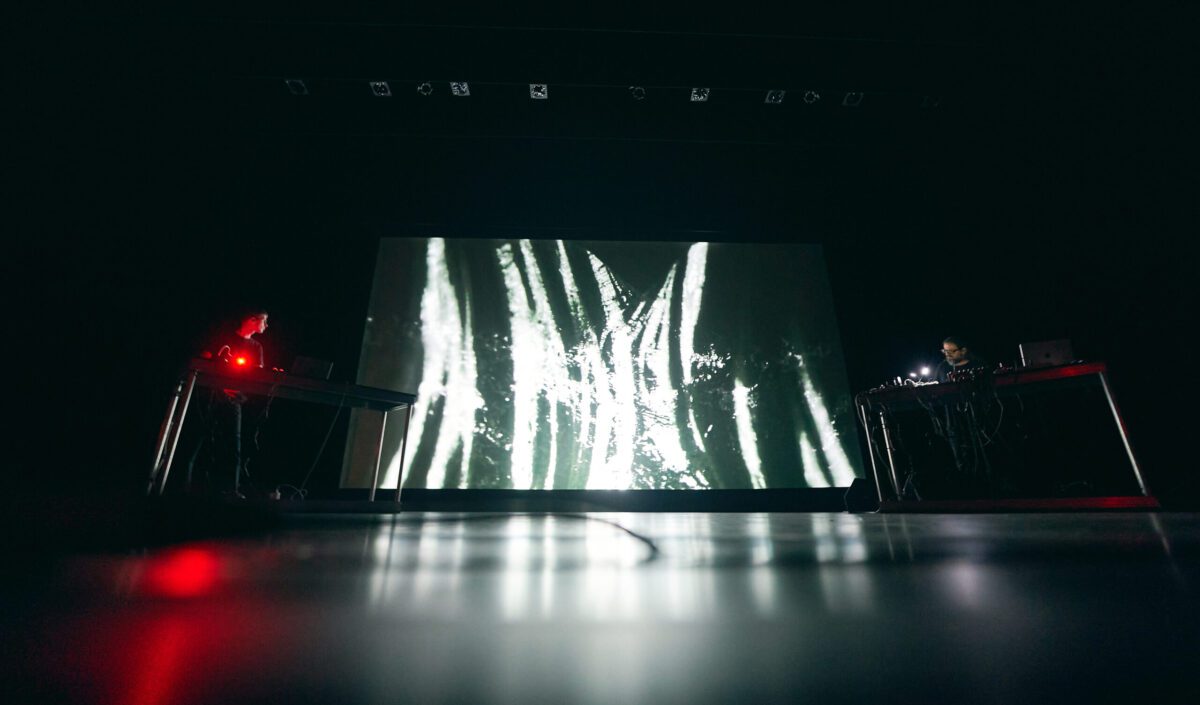
Alessandro Cortini & Marco Ciceri
The Italian duo presented a much heavier performance. In addition to a much slower tempo, the whole piece retained a minor key and was therefore perceptibly more melancholy. Arpeggios played on the synthesizers progressed slowly, resulting in a relatively static framework that grew happily denser during the finale. At this point, the harmonic spectrum quietly approached white noise, while the melodic elements were still clearly perceptible. Visually, the projections were a kind of study of the microscopic patterns of bee wings. Alessandro Cortini impresses with his invented synthesizer and a resume full of prestigious collaborations from Nine Inch Nails to Merzbow. His performance at A/V Visions, however, was less enthusiastic. Without being soporific, the music on offer was far from out of the ordinary. It was nonetheless effective as a mantra to reflect on the possible disappearance of pollinating bees and the disruption of plant fertilization cycles.
